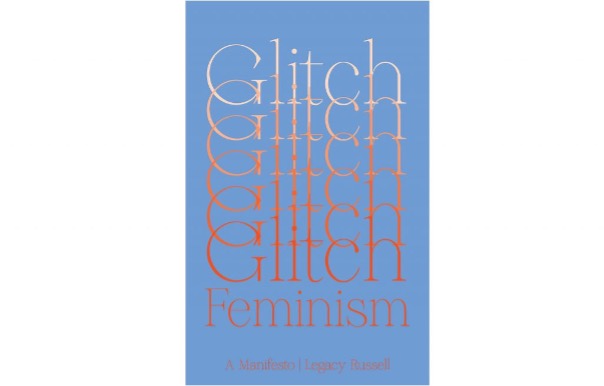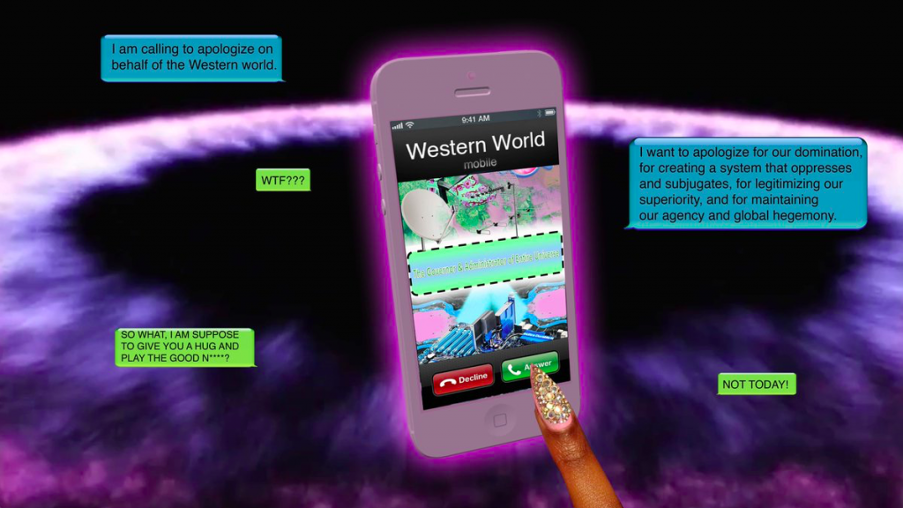SUMMER READING: July-August 2021
Digital Special Edition Review
Subscribe or Order to Get Your Copy Today
Glitch Feminism: A Manifesto
Reviewed by Pelumi Odubanjo
A ‘glitch’ is often considered to be an error; a malfunction that appears to temporarily cause or indicate fault within a (digital) system or machine. Rarely is a glitch considered to occur beyond the realms of cyber-space. Is it possible for the ‘glitch’ to be embodied? And in such, is it possible for the glitch to be used as radical practice?
The answer, in short—according to Legacy Russell—is yes. In Glitch Feminism: A Manifesto, the rousing debut book by American curator and arts writer Legacy Russell, the glitch is defined as a creative strategy informed by and for queer, trans, nonbinary, and non-white communities that are systematically oppressed by capitalist, heteropatriarchal forces. Using the trope of a political manifesto rather than a long-form essay to bring narratives of marginalised individuals to light, Russell unravels the various ways that liberation can be found within the fissures between race, gender, and technology.

Legacy Russell. Photo by Mina Alyeshmerni. Image courtesy Verso Books.
Opening the text through a memoir-like transit, Russell describes what the internet once represented throughout her adolescence as a Black, femme queer woman. Russell, who was born and raised in New York City, spent her formative years roaming the internet. Online, through “storytelling” and “shapeshifting,” Russell “found [her] first connection to the gendered swagger of ascendency, the thirsty drag of aspiration” The internet held Russell’s experiments with queerness, femmeness, and blackness as a space where she was able to become “digital Orlando…shapeshifting, time-traveling, genderfucking as [she] saw fit.”
Infusing memoir and Black feminist theory, Russell paints an image of a physical world unequivocally entangled by the cyber-realm. Concerned with how race, gender, and sexuality influence and affect the way that our identities are performed, Russell’s glitch is to be understood as a political framework; one which precedes any gendered economy and one which, as it enters and is performed, registers a resistance. Such a strategy provides a necessary resistance for those bodies that have been ignored, side-lined or considered “faulty” by hegemonic culture. As she writes, “a body that pushes back at the application of pronouns, or remains indecipherable within binary assignment, is a body that refuses to perform the score. This non-performance is a glitch. This glitch is a form of refusal.”
Glitch Feminism recaptures the rallying cry of early cyberfeminism. First theorized by the cultural theorist Sadie Plant in the early 1990s, cyberfeminism was defined as “a movement which sought to re-theorize gender, the body, and identities in relation to technology and power.” Though Russell does not go in-depth in referencing Plant or fellow “cyborg” Donna Haraway, the thread is evident. Central to early cyberfeminist thought were the ways that the digital realm could present a techno-utopian field to enact the aspirations of radical feminism. However, cyberfeminists often failed to register how their liberatory efforts were modelled strictly on their exclusions—those of white, cis womanhood. Russell recognises that as Black and queer people, the digital space can hold varying liberatory practices, acting as a site for collective gathering, a space for interrogating and congregating, and as a place for nightlife and partying. Russell actively chooses to not center the activity of these early cyberfeminist thinkers in Glitch Feminism, but reaffirms this thread through its refusal to be pinned down to a singular context. In doing so, Russell perfectly contends that Glitch Feminism is, in fact, a part of that history.

Still from Tabita Rezaire, Afro – Cyber Resistance (2014). Image courtesy of the artist.
Building a strong scaffolding around her manifesto, Russell interweaves various works from multidisciplinary artists, offering a multitude of creative practices that are informed by the glitchy porousness of cyberspace. Including pieces by Ocean Vuong and Sondra Perry, amongst others, each work acts as an interlude for the narrative, aptly breaking up Russell’s train of thought, yet never throwing the reader off. Much like her curatorial practice, Russell creates an artistic landscape that defies chronology and linearity, uniquely rebelling against the patriarchal framing of history.
Glitch Feminism asks us to interrogate the possibilities of an online world. The glitch is no longer “an error, a mistake, a failure to function.” Rather, the glitch actively decodes, unravels, and ultimately ruptures our notions of the digital realm, revering it as a space where the self is found through constant metamorphosis. Russell throws out several intriguing incitements, and in many cases I found myself wanting Russell to complicate and deepen these ideas. However, Glitch Feminism is at its best in these moments of humming assertion. Russell wields language as an artwork in itself, creating a philosophy grounded by a utopian vision, wherein the glitch stands as the first step towards a freedom built on error and revolt.
Glitch Feminism: A Manifesto by Legacy Russell
192 pages / August 2020 / VERSO Books




